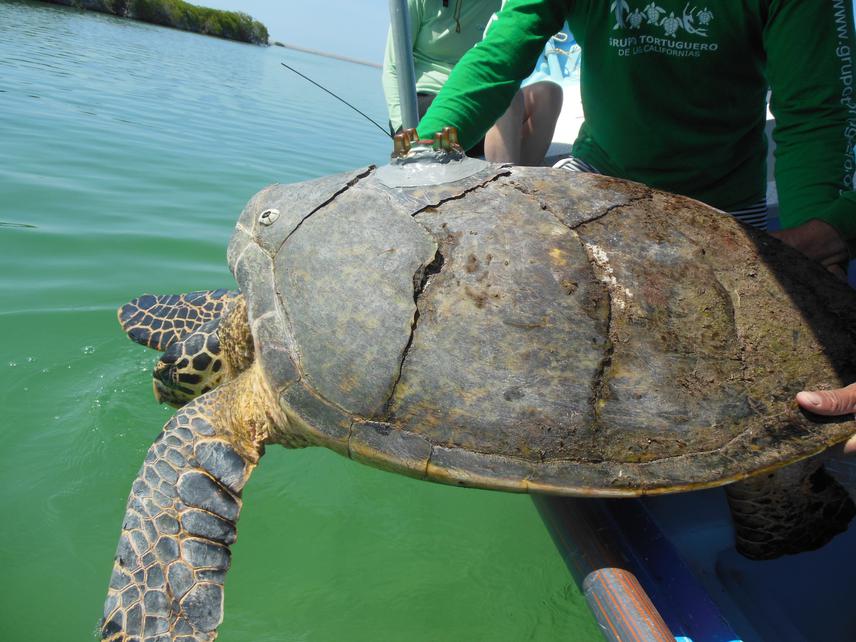Lourdes Martinez Estevez
Other projects
14 Nov 2022
Hawksbill Tortoiseshell Fishery and Conservation in the Gulf of California, Mexico
Eastern Pacific hawksbill turtles are considered the most endangered of all sea turtle species. Unlike other populations, these hawksbills intensively use mangrove estuaries which are also important in supporting small-scale fisheries. The aim of the project is to significantly increase formal protection for critical mangrove foraging habitat for sub-adult and adult hawksbill turtles in the Gulf of California, Mexico. The results will inform a potential win-win strategy where a network of locally managed protected areas can protect hawksbills and small-scale fisheries in the region.

Sea turtles are the most endangered group of pelagic vertebrates with 86% (6 of 7 species) threatened with extinction. Hawksbill sea turtles (Eretmochelys imbricata) are Critically Endangered on the IUCN Red List and are estimated to have declined over 80% in just 3 generations due to: degradation of nesting habitat, directed and by-catch mortality of juveniles and adults, and a vulnerable life history with maturity at 20-40 years. This is particularly true for Eastern Pacific hawksbill population, believed to be the most endangered of all sea turtle species. Indeed, this species was believed to have been extirpated due to overexploitation of eggs and adults. Fortunately, in 2008, several nesting beaches were identified between Mexico and Ecuador, providing the prospect of long-term recovery.
One potential mitigation strategy for bycatch mortality is near shore marine protected areas. Although these areas are widely implemented as an artisanal fisheries management strategy, they are relatively untested as a tool for the conservation of threatened species that tend to range widely as individuals. Well-designed near shore marine protected areas that also include local users in their design and enforcement (Locally Managed Marine Areas – LMMAs) can benefit foraging sub-adult and adult hawksbill turtles because hawksbill turtles appear to prefer restricted near shore coastal habitats.
Unlike other global hawksbill populations which tend for forage on coral reefs, Eastern Pacific hawksbill turtles intensively use mangrove estuaries for foraging and nesting. At the same time, small scale fisheries landings in the Gulf of California are positively correlated with adjacent mangrove area. Thus, mangrove loss has obvious implications for small scale fisheries in the Gulf of California as well as important consequences for the mangrove-dependent Gulf of California hawksbill population.
The overall goal of this project is to significantly increase formal protection for critical mangrove foraging habitat for hawksbill turtles in the Gulf of California, Mexico. To accomplish this, a high-resolution hawksbill tracking study will be performed to determine the importance of mangrove estuaries for hawksbill foraging in the Gulf of California.
From a scientific perspective, this research will contribute to a better understanding of hawksbills' habitat preferences and movements. This is particularly important for the Eastern Pacific population since few information on its ecology is currently available. From a conservation perspective, it will provide habitat-species information to be used in the design of an effective spatial strategy for their long-term recovery.